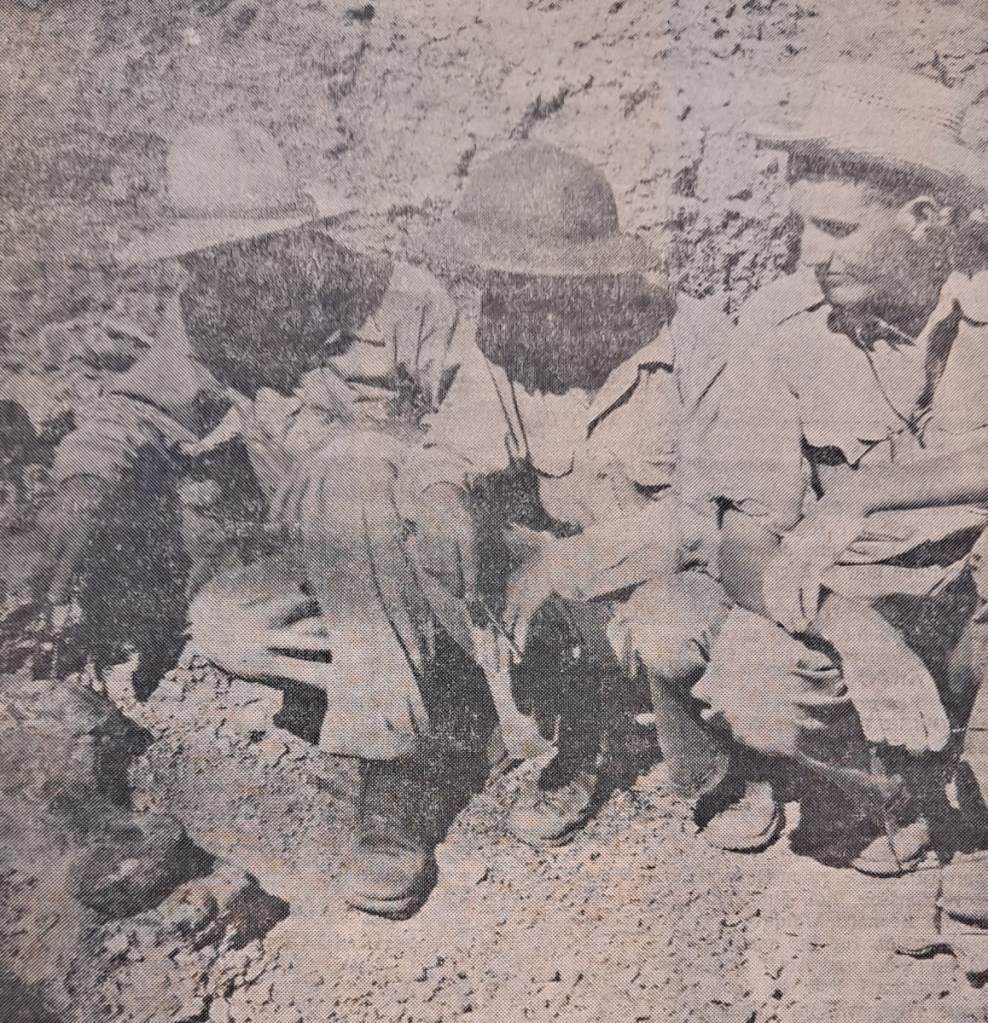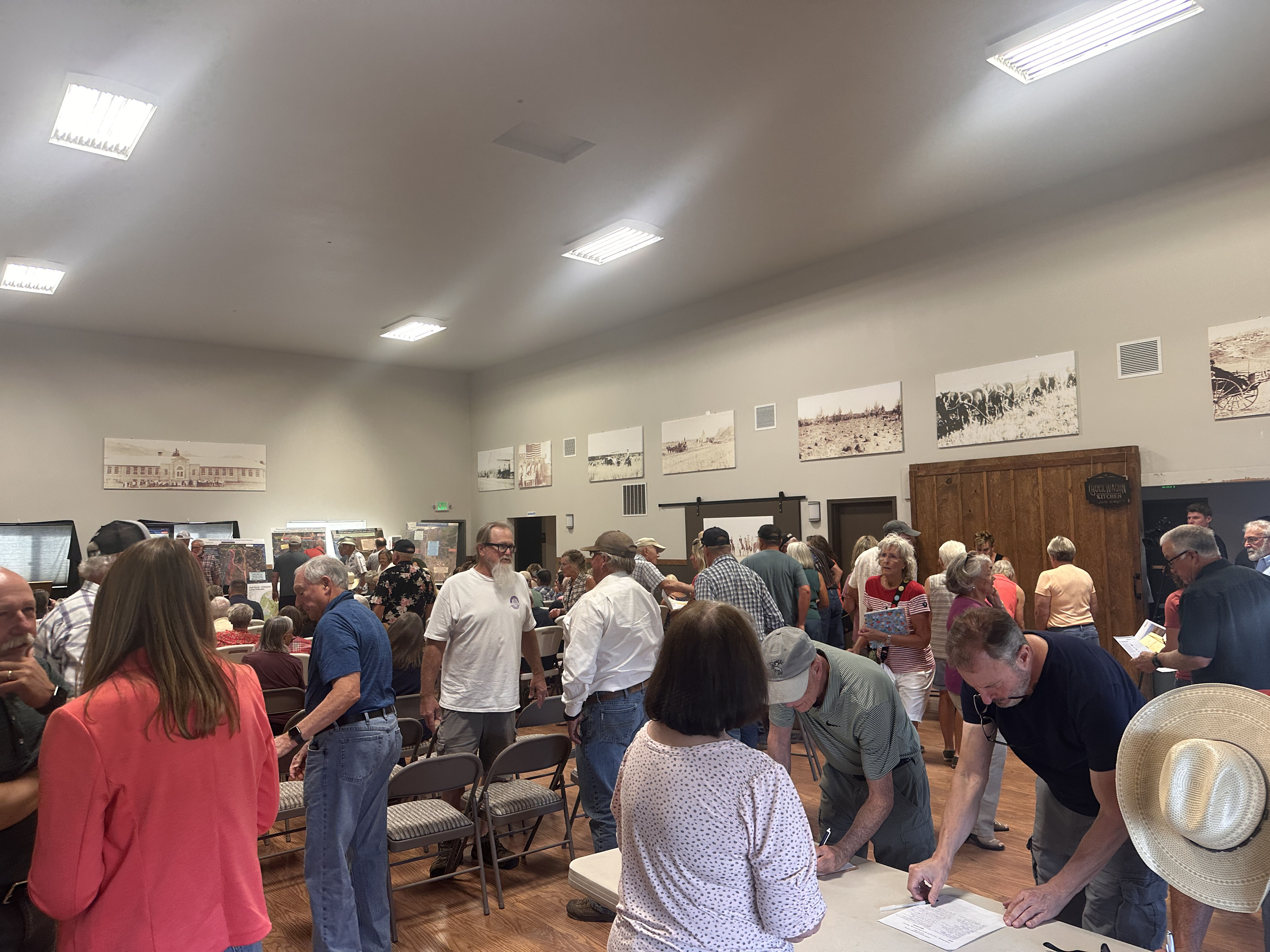8-6-25 Looking Back
Published 10:20 am Thursday, July 31, 2025
100 YEARS AGO
August 6, 1925
The work of enlarging the power plant on the Crooked River, which has been in progress for more than a year has practically been completed.
Trending
The addition to this plant will increase the capacity by about 1,000 horsepower and will meet the increasing demands, which taxed the former plant to the limit. The current generated from this plant furnishes electricity for practically all of the Central Oregon country.
The entire building, which is really one unit with the new addition, which was built, measures 136 feet in length and 40 feet in width. It is built entirely of concrete even to the roof, and all window casing and parts where it is impractical to use the concrete are made of steel, which makes it practically fireproof.
When one crosses the Crooked River at Trail Crossing and notes a slow, quiet stream, whose force would scarcely turn a mill wheel, it seems hardly possible that a force capable of producing so much energy could be found in the same stream a few miles below.
70 YEARS AGO
August 4, 1955
In a barren mountain spot less than 50 miles from Madras a small crew of men working under a hot and merciless sun unfold the natural history of Oregon that dates back some 50 million years ago to the dawn of the age of mammals, the Eocene period.
Trending
An hour’s ride from Madras to Clarno, over in the edge of the Ochoco Mountains, will take one back to the days of dinosaurs, Hyrachyus (small running rhinoceros), Titanotheres, Brontotheres, and Metamynodons (aquatic rhinos).
There on the hot mountainside, the bones of these prehistoric animals are being uncovered, giving for the first time some tangible record of the first mammal life that walked this way when Oregon was a tropical land.
This unique Clarno “dig,” which is maintained by the University of Oregon, was discovered last summer by an amateur paleontologist from Portland, Alonzo W. Hancock, who knows the sunbaked mountains of the regions as perhaps no other man.
Clarno Nut Beds
For more than a dozen years, amateur collectors have been picking up almonds, dates, figs, aralia leaves and other flora of the Eocene period in the now famous “nut beds of Clarno.” But this new mammal bed is the first of its kind to be uncovered west of the Rockies.
When Hancock realized the importance of his discovery, he contacted Dr. J. Arnold Shotwell, curator of the university’s museum of natural history. Shotwell is now directing the digging operations for the university.
Excitement mounted in the camp in July when evidence indicated a Brontothere. Today the crew is uncovering what they hope will be the complete fossilized remains of one of the biggest mammals to ever walk the face of the earth.
Rollercoaster Track
The camp site is located about three miles from Clarno, and down a rollercoaster dirt track from the road. Up steep ash-covered slopes two miles from camp is the dig on Iron Mountain.
Here, unprotected from a blazing sun in temperatures that must average 115 degrees, the university crew labors. Working right along with Bert Coombs of the University of California, and Ray Harris, high school senior from Enterprise, is Hancock, now in his seventies.
Shotwell drops in on the Clarno crew every so often, but he is kept pretty busy at another dig 250 miles away, near Juntura, Oregon, where a different type of research is underway.
Here Shotwell is trying to find out something about the effects of environmental change on community organization over a long period of time, a study called paleoecology. No successful study of this has ever been made. But the area looks so promising that the National Science foundation is underwriting the research there for the next two years.
Crew Members
Members of the Juntura crew include Dick Bowen and Will Gray, graduate students in geology from Oregon; Dave Deudell, a high school student from St. Helens, and Don Russell, graduate student from the University of California, who is Shotwell’s research assistant.
Although the Juntura camp is closer to civilization, both crews must fight the baking sun and the terrifically rugged terrain, as well as such unwelcome visitors as snakes, scorpions and ticks. Dirt and sunburns have become constant companions for these dedicated scientists. Water has to be carried in by the gallon.
Yes, these men prove that it takes a strong will and constitution and a lot of sweat to write the natural history of our prehistoric earth.
50 YEARS AGO
August 7, 1975
A pass in the Cascade Mountains near Sisters has been officially named Opie Dilldock Pass in honor of a newspaper cartoon character of the early 1900s.
The name, approved by the U.S. Board on Geographic Names, will be used on federal and state maps and other publications.
The Oregon geographic names board adopted the name for the pass last December. Opie Dilldock Pass is in the Willamette National Forest about 15 miles southwest of Sisters. It links a lava rock field and the Three Sisters mountain range.
The comic strip “Old Opie Dilldock,” the work of Frank H. Haworth, was syndicated by the Chicago Tribune from 1907 to 1914.
Ope Dilldock was noted for telling tall tales that ended with him escaping from dangerous situations in the nick of time.
Donald J. Orth, chairman of the names board, said the name of the pass had been spelled several ways over the years. The source of the name also has been attributed to a 14th century liniment called “opodeldoc” and to “Opedildock,” a more recent liniment product, and to the legend of an early explorer named Obie Dilldock, who was said to be buried near the pass.
25 YEARS AGO
August 9, 2000
Last year Grizzly rancher Sam Rufener became a logger, not of ordinary trees, but a forest of 30-million-year-old trees.
A third-generation rancher on the family place near Grizzly Butte, Rufener often worked with a bulldozer and sometimes rented a backhoe.
It was one of those times digging with the backhoe that he unearthed a number of ancient, petrified logs, some as long as 40 feet, with diameters of three feet or more.
According to local fossil expert Mel Ashwill, two of the logs proved to be huge upright stumps of “dawn redwood,” an ancient conifer related to the swamp cypress. This tree still grows in the Szechuan province of China but has been extinct in North America for nearly 15 million years.
The two stumps were anchored upright in the ground, apparently right where they were overwhelmed by a mudflow.
Through time, silica in ground water became deposited in the microscopic spaces in the wood, creating opal and preserving the wood grain.
In 1999, Rufener sold and shipped out several low-boy truckloads of the slabbing-grade petrified wood. He himself has made beautiful large sawed and polished slabs of the wood.
A dealer in New Jersey who cuts, polishes and sells petrified wood, bought the logs from Rufener, who proved again that the American rancher continues to be inventive in his efforts to keep the family place going.
Ashwill noted Aug. 10 through 13, about 20 of the nation’s leading paleobotanists will visit Central Oregon to see various fossil leaf sites, including the Gray Butte, Paulina, Mitchell and Clarno fossil digs. They are in Oregon for the annual meeting of the Botanical Society of America in Portland.
The Rufener Ranch is about 15 miles southeast of Madras. Entry to the property is by personal permission from the Rufeners only. During wet weather, the back roads to the beds are not passable, but in summer months Rufener, by appointment, will allow some collecting on a fee basis. He also has some petrified wood for sale at the ranch house.







